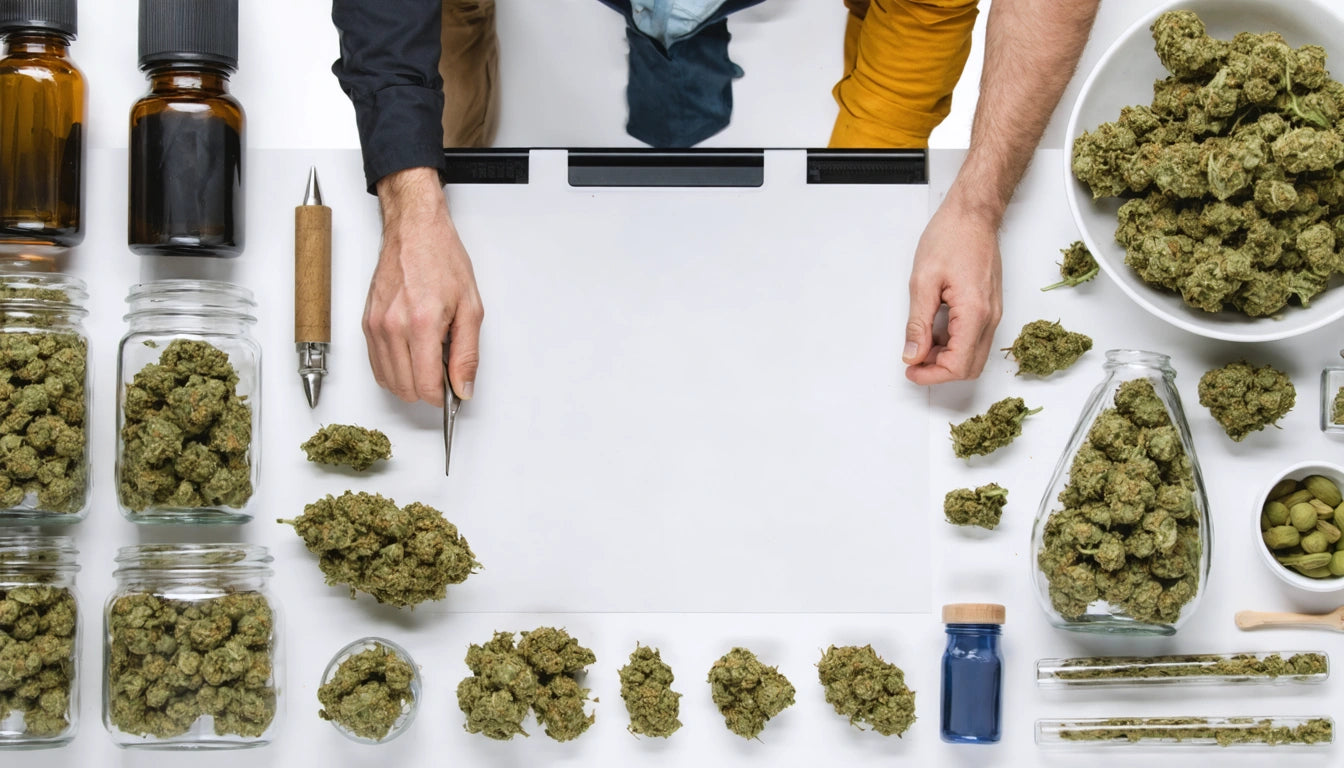Table of Contents
- Basics of Indoor Cannabis Cultivation
- Setting Up Your Grow Space
- Choosing Cannabis Strains for Indoor Growing
- Lighting Requirements for Indoor Cannabis
- Soil and Nutrients for Healthy Plants
- Watering Techniques and Schedules
- Understanding Cannabis Growing Stages
- Harvesting and Curing Your Cannabis
- Common Problems and Solutions
- Advanced Growing Tips for Maximum Yield
The Ultimate Guide to Growing Cannabis Indoors: Step-by-Step Tips and Techniques
Growing cannabis indoors offers precise control over environmental factors, resulting in consistent, high-quality harvests year-round. Whether you're a beginner wondering how to grow marijuana indoors or an experienced grower looking to refine your techniques, this comprehensive guide will walk you through the entire process from setup to harvest.
Basics of Indoor Cannabis Cultivation
Indoor cannabis cultivation allows growers to manipulate light cycles, temperature, humidity, and nutrients to create optimal growing conditions. Unlike outdoor growing, indoor setups provide privacy, security, and the ability to grow multiple harvests throughout the year regardless of climate or season.
Before starting your indoor grow operation, familiarize yourself with local laws regarding cannabis cultivation. Legal requirements vary significantly by location, with some areas permitting only a specific number of plants or requiring particular security measures.
Setting Up Your Grow Space
The first step in how to grow cannabis indoors is creating a suitable environment. Your grow space can range from a small closet to a dedicated room or tent, depending on how many plants you intend to grow.
Essential Components for Your Grow Room
- Grow tent or enclosed space: Provides light control and containment
- Proper ventilation: Exhaust fans and carbon filters to manage odor
- Temperature and humidity controls: Thermometers, hygrometers, heaters, air conditioners
- Reflective materials: Mylar or white paint to maximize light efficiency
- Growing containers: Fabric pots, plastic containers with drainage
Cleanliness is crucial when setting up your grow space. Sanitize all surfaces and equipment to prevent pests and pathogens that could harm your plants. A well-designed space also includes easy access to water and electricity.
Choosing Cannabis Strains for Indoor Growing
When learning how to grow marijuana indoors step by step, selecting the right strain is critical. Indoor environments are particularly suitable for indica-dominant strains, which typically grow shorter and bushier than sativas. However, with proper training techniques, most strains can thrive indoors.
Consider these factors when selecting strains:
- Available space (height and width limitations)
- Growing experience level
- Desired effects and cannabinoid profile
- Flowering time and expected yield
- Resistance to common pests and diseases
Beginners often find success with hybrid strains that offer resilience and forgiveness for minor mistakes during the growing process.
Lighting Requirements for Indoor Cannabis
Lighting is perhaps the most critical aspect of how to grow a cannabis plant indoors. Cannabis requires different light cycles during vegetative growth and flowering stages:
- Vegetative stage: 18-24 hours of light per day
- Flowering stage: 12 hours of light and 12 hours of uninterrupted darkness
Common lighting options include:
- LED: Energy-efficient with customizable spectrum, minimal heat output
- HPS (High-Pressure Sodium): High yield potential, significant heat output
- CMH/LEC (Ceramic Metal Halide/Light Emitting Ceramic): Balanced spectrum, moderate efficiency
- Fluorescent (T5, CFL): Budget-friendly, suitable for small grows and seedlings
Proper light distance is crucial to prevent light burn or insufficient light penetration. Most manufacturers provide recommended hanging heights based on wattage and growth stage.
Soil and Nutrients for Healthy Plants
Cannabis plants require specific nutrients throughout their lifecycle. For beginners wondering what do I need to grow cannabis indoors, a quality cannabis-specific potting soil provides a solid foundation.
Growing Mediums
- Soil: Forgiving, natural, requires less frequent watering
- Coco coir: Excellent drainage, requires more frequent feeding
- Hydroponics: Faster growth, requires technical knowledge
Essential nutrients include:
- Nitrogen (N): Critical during vegetative growth
- Phosphorus (P): Important during flowering
- Potassium (K): Supports overall plant health
- Micronutrients: Calcium, magnesium, iron, etc.
Start with half-strength nutrients to avoid burning plants, gradually increasing as they demonstrate tolerance. Monitoring pH levels (ideally 6.0-6.5 for soil, 5.5-6.0 for hydroponics) ensures optimal nutrient absorption.
Watering Techniques and Schedules
Proper watering is essential for cannabis growing indoors tips and techniques. Overwatering is a common mistake among beginners. Water only when the top inch of soil feels dry to the touch.
Consider these watering best practices:
- Water until you see 10-20% runoff from drainage holes
- Allow the growing medium to dry partially between waterings
- Use room-temperature water to avoid shocking roots
- Consider the humidity level when determining watering frequency
- Increase water volume as plants grow larger
For efficiency in larger grows, drip irrigation systems with timers can automate the watering process while ensuring consistency.
Understanding Cannabis Growing Stages
Learning how to grow a cannabis plant inside requires understanding its life cycle:
1. Germination (3-10 days)
Seeds sprout, developing their first root and embryonic leaves (cotyledons).
2. Seedling Stage (2-3 weeks)
The plant develops its first true leaves with the characteristic serrated edges.
3. Vegetative Stage (3-16 weeks)
Rapid growth of stems, branches, and leaves. Plants are shaped during this stage through training techniques.
4. Flowering Stage (6-12 weeks)
Plants develop buds after light cycle changes to 12/12. Female plants grow pistils, while males develop pollen sacs (which should be removed unless breeding).
Each stage requires different care in terms of nutrients, watering, and environmental conditions. Maintaining detailed records helps track progress and refine techniques for future grows.
Harvesting and Curing Your Cannabis
Knowing when and how to harvest is crucial for potency and flavor. Look for these signs of readiness:
- Pistils darkening from white to orange/brown (70-90%)
- Trichomes turning cloudy or amber (visible with a jeweler's loupe)
- Leaves yellowing and beginning to fall
- Slowed growth of new pistils
After harvesting, proper drying and curing significantly improve quality. For processing your harvest efficiently, quality grinding equipment can help prepare your cannabis for various consumption methods while preserving trichomes and potency.
The curing process typically takes 2-4 weeks in airtight containers, with periodic opening (











Leave a comment
All comments are moderated before being published.
This site is protected by hCaptcha and the hCaptcha Privacy Policy and Terms of Service apply.